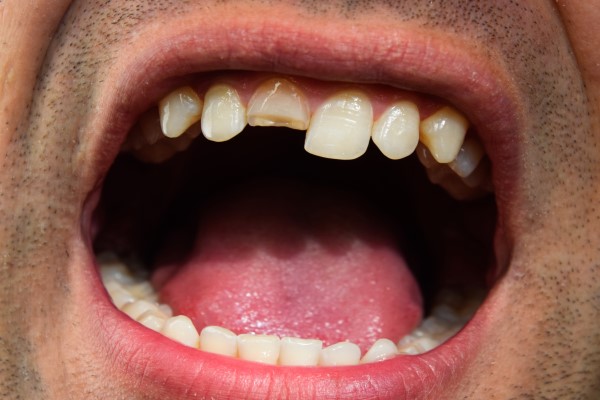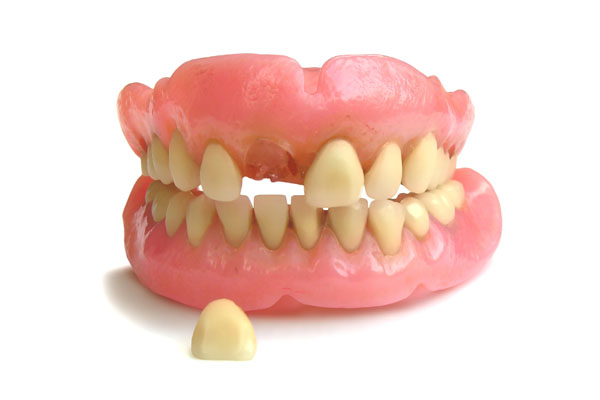How Important Is It to Get Dental Care for a Chipped Tooth?

It is not uncommon to have a chipped tooth. This can occur due to an injury or accident or from biting into something hard. You may even chip a tooth because it has become weakened due to tooth decay. This presents both cosmetic issues and challenges to your oral health. The good news is this is a condition that a dentist can repair by using one of a few different methods. You should not have to live with a damaged tooth any longer.
Proper care for teeth
Avoiding a chipped tooth is more likely if people will follow some basic guidelines. The first key is to keep up with good oral hygiene. Daily brushing and flossing will strengthen tooth enamel and reduce the risk of decay and gum disease. A strong, healthy tooth is less susceptible to chipping, even under pressure and hard bite forces. Staying away from the habit of biting on pens, fingernails, and other objects will also help to prevent chipping.
Discussing options with the dentist
Many instances of a chipped tooth are readily visible to the patient. In other cases, the dentist may identify the condition in an exam. This could be through an X-ray or a hands-on examination of the mouth. Based on the size and location of the damage, the dentist may suggest a particular treatment. The dentist may also determine that treatment is not necessary for non-cosmetic reasons. This may happen if the patient does not have any tooth pain.
Putting it off
Failing to treat a chipped tooth has various consequences. There is a chance that the tooth will chip even more or even fracture. This can result in pain and discomfort. It also opens the tooth and root up for more significant problems, including loss. A chipped tooth may also impact the person’s self-esteem.
Treatments: crown or veneer
For a larger chipped tooth, a filling may not be a good option. A crown is a device resembling an artificial tooth. It fits entirely over the tooth, protecting it and restoring its form. A crown can withstand strong bite forces, enabling the person to eat most foods. However, it is wise to be cautious about biting into hard, chewy, and sticky foods. A crown does require the dentist to shave the natural tooth so that the cap fits well.
If the chipped tooth is in the front or a more visible part of the mouth, a veneer might be the right choice. It is a thin porcelain shell that attaches to the front of the tooth. Much like an artificial fingernail, it can restore the tooth’s shape and appearance. To bond the veneer to the tooth, the dentist will remove a small amount of enamel and etch the tooth so that it is rough.
The right care for your chipped tooth
Chipping a tooth can be painful and uncomfortable. It can also be embarrassing and affect your self-image. One of these three treatment options should be able to help you regain your smile. Talk to your dentist today about which solution fits your needs.
Are you considering restoring a chipped tooth in the New York area? Get more information at https://www.newyorkdentaloffice.com.
Check out what others are saying about our services on Yelp: Chipped Tooth in New York, NY.
Recent Posts
The purpose of dental restorations is to replace permanent teeth that are lost. This can happen because of trauma to the tooth that renders it irreparable or decay that is so extensive that it requires extraction. There are several restoration options for replacing a missing tooth. Some are removable while others are permanently fixed in…
Dental inlays and crowns are two common restorative options for repairing damaged or decayed teeth. While both restore the tooth's functionality and appearance, they have different purposes and address different dental conditions. Both options are custom-made and provide durable solutions for restoring oral health and enhancing your smile. Understanding the differences between dental inlays and…
Restorative dentistry refers to any type of dental procedure that a dentist performs to restore a damaged or missing tooth. Dental restorations can encompass several procedures that vary in terms of invasiveness, complexity, and what they can accomplish. However, the overreaching goal of all restorative procedures is to improve the health, function, and appearance of…
Dental restorations are for patients with missing, weakened, fractured, or decayed teeth. A restoration replaces or repairs missing teeth or parts of the tooth's structure. If a tooth shows signs of decay or may cause trouble later, dentists can strengthen the tooth to avoid future issues. When it comes to dental restoration, two common types…



